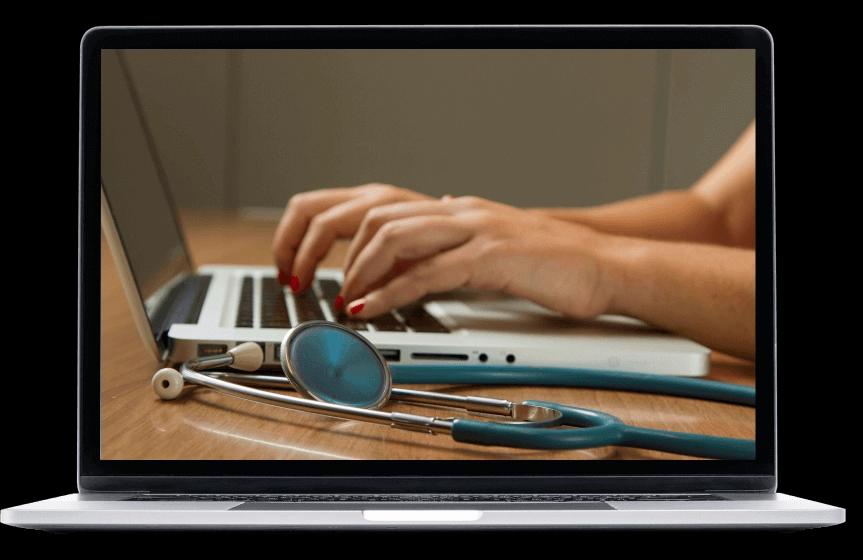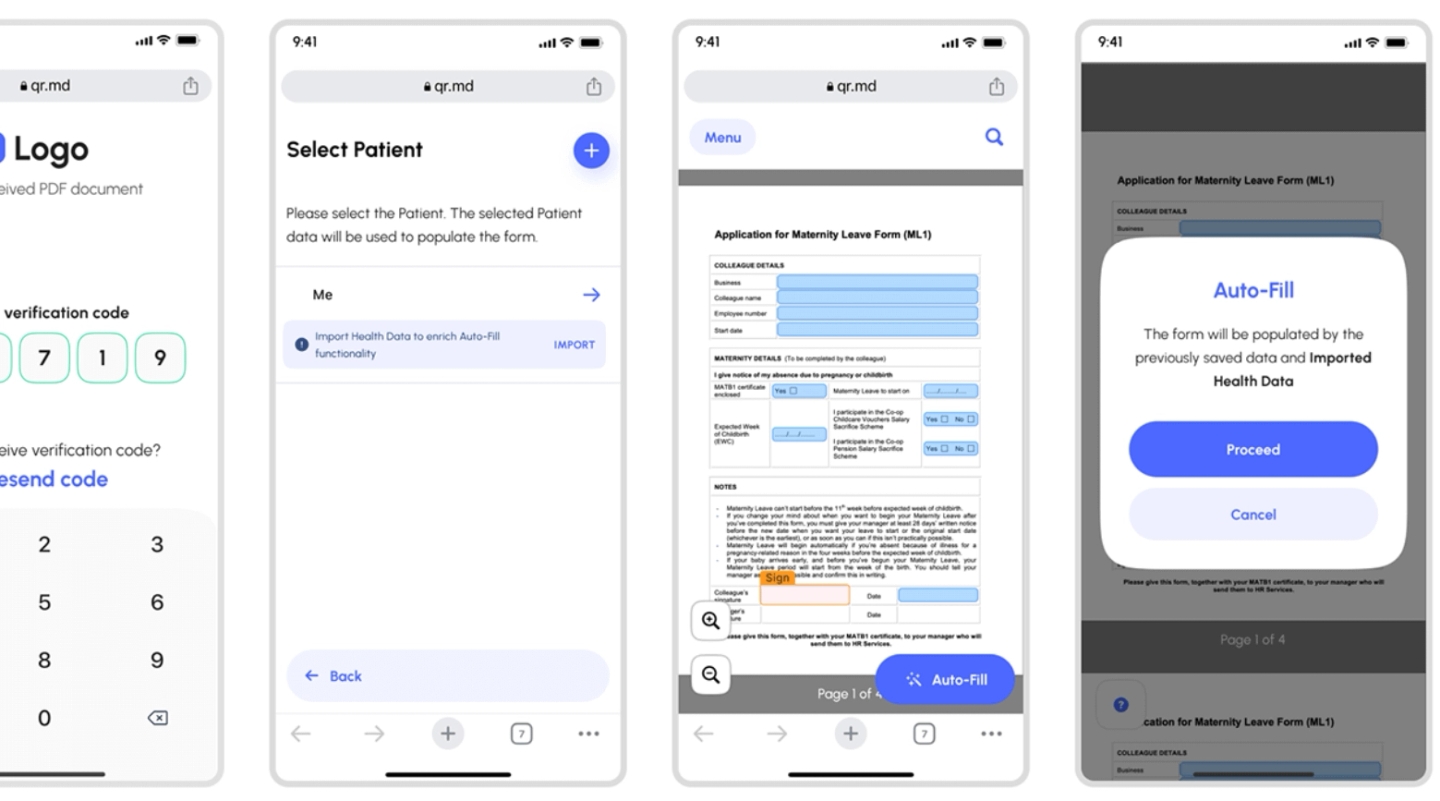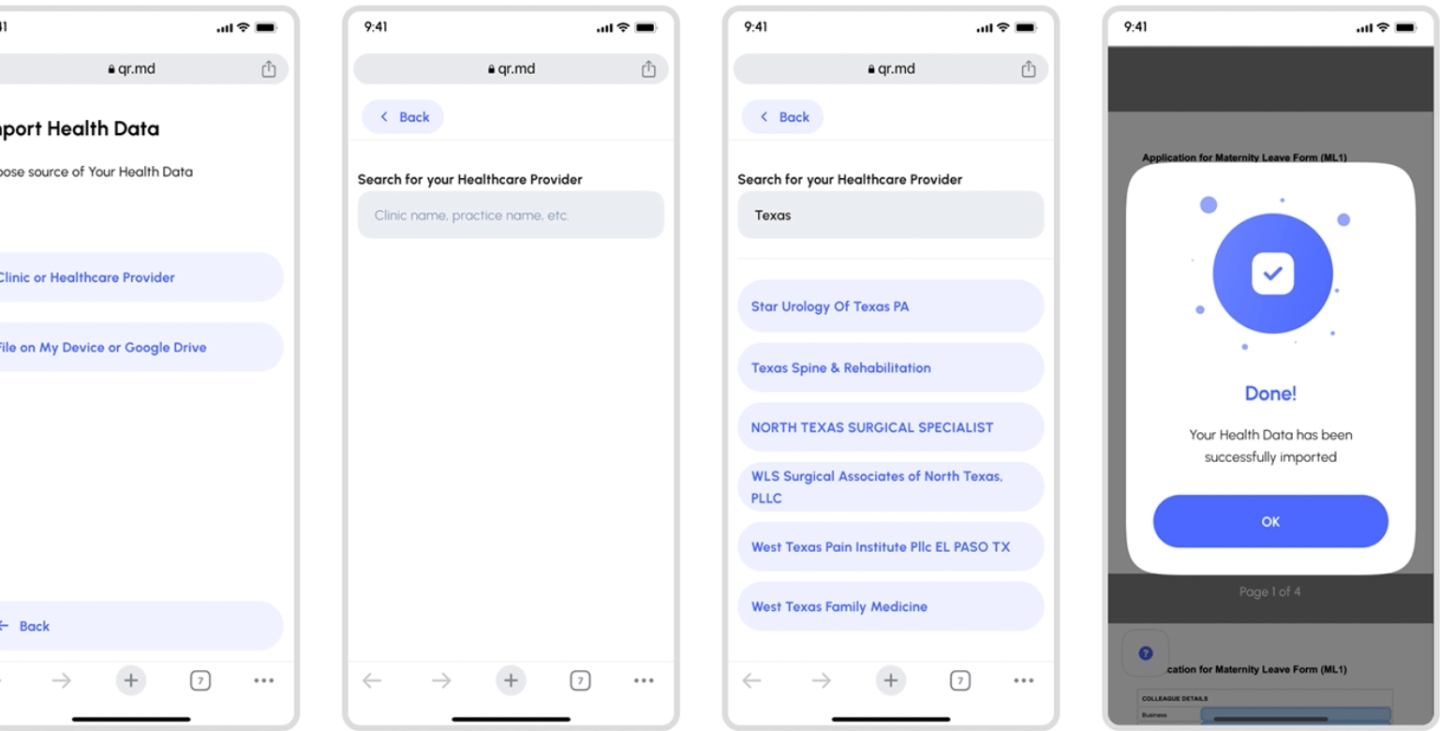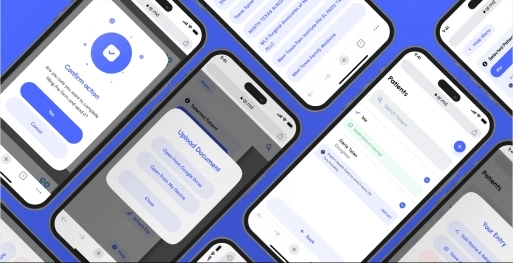Multi-channel document automation product
- Node.js
- JavaScript
- Typescript
- CSS
- HTML5
- AWS
Project Context
Solution
Outcome
About Client
Way back in 2005, our client specialized in crafting solutions for document management software, targeting businesses still reliant on fax communication.
The shift towards cloud-based computing in 2011 prompted a rebranding, expanding the company's mission to offer a centralized platform for effective document and information management.
Now, this continually refined platform serves as a unified, end-to-end document and data automation solution. It significantly reduces communication cycles with patients, providers, and payers, enhancing patient and financial outcomes for healthcare and life sciences clients.
Focused exclusively on B2B activities, our client's multi-channel document automation product seamlessly integrates healthcare document workflows within Salesforce and ServiceNow.
Business challenge
The business challenge centered on transitioning from a B2B to a B2C model.
The client decided they want to avoid being wholly tied to Salesforce and would like to evolve the business towards working directly with end-users, namely patients.
The idea was to automate form filling and simplify the patient's life by utilizing their data already present in various EHR systems, etc.
Binariks was selected for this mission based on our expertise in the healthcare domain. The client presented us with a prototype for a B2C solution and asked us to refine the mobile app so that they could test it with the first 1000 users and gather their feedback to enhance convenience.
However, during the initial stages of the business analysis process, we identified several main challenges that prevented us from rushing into these tasks. These challenges included the following:
- An influx of documents from different channels;
- input data storage not compliant with HIPAA;
- lack of technical documentation;
- lack of a unified product vision among stakeholders;
- and poor UI design.
Solution
We concluded the importance of finding a distinctive "killing feature" that would be both useful and appealing to our clients, and easy for them to understand. We kept in mind the unique qualities of a B2C product compared to a B2B one, and we highlighted this difference in our designs.
After considering several options, we decided that our thing will be the ability to complete almost any document with just one click. This feature would allow users to receive, open and fill in all the necessary data automatically. It didn't matter if the data was previously stored or extracted from EHR/EMR. We incorporated a "fill in" button that would work for both, enabling users to click and get the needed fields magically filled.
The target audience, who already have EHRs with their healthcare providers, could use this application to fill out various healthcare forms and documents with ease. This includes anything from regular hospital admission forms to, say, specific medical certification applications and forms.
Finally, we presented our final MVP prototype with an outstanding UI, which we had developed based on assumptions and discovery sessions with the client.
Implementation
The chosen solution involved engaging Binariks for Software Architecture Consulting, the Discovery Phase, and the definition and creation of a roadmap for the MVP and subsequent phases. The key outcomes of the discovery phase were a clickable Figma prototype, solution architecture documentation, team composition, an implementation of the WBS (Work Breakdown Structure) for the MVP, and estimations
The roles of various team members in this project included:
- Business Analyst activities such as requirements elicitation and validation sessions, demoing final designs, and walkthrough sessions
- UX-UI Designer activities involved working on user stories/scenarios, defining the app design details, styles, colors, and fonts, and creating a UI kit in Figma
- Solution Architect activities included gathering limitations, preparing and prioritizing requirements, agreeing on the frontend tech stack and approaches, and completing solution architecture design with MVP WBS and ballpark implementation estimate
- Frontend Engineers were tasked with assessing frontend libraries, selecting them, and creating a proof of concept for integration with Salesforce LWC
Value Delivered
- B2C transformation: Successfully guided the client's transition from a B2B to a B2C model, allowing direct interaction with end-users (patients).
- UI/UX excellence: Delivered an outstanding user interface (UI) based on assumptions and discovery sessions, focusing on enhancing the overall user experience.
- Technical expertise: Leveraged Binariks' healthcare domain expertise, tackling challenges related to HIPAA compliance, technical documentation, and input data storage.
- Milestone achievement: Successfully presented the final Minimum Viable Product (MVP) prototype, embodying the client's vision and delivering a robust, innovative healthcare solution.



